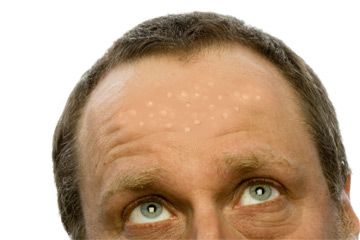Nobody likes warts. Toads are constantly ostracized for them. Evil witches are portrayed with them prominently on their noses. You can hide plantar warts with a pair of socks and shoes, but a wart on your hand might make you feel like everyone's taking notice.
Warts can appear on skin on any part of the body, but where a wart develops determines its physical characteristics, such as size, color and texture. There are five different types of warts: common, plantar, flat, filiform and periungual. Warts growing near the nail bed, or periungual warts, are part of the common wart family and are caused by the human papillomavirus (HPV) [source: Mayo Clinic]. Periungual warts are unique because they develop around the nail on the foot and hand.
Advertisement
If the virus growing in and around the nail isn't treated, the nail may detach from the skin. But other than the threat of losing a fingernail or toenail, periungual warts are very similar to warts that form elsewhere on the body. They're raised, rough and cauliflowerlike. The spot where a wart develops usually turns a different color than the skin around it and, like other warts, periungual warts are benign and treatable.
Unfortunately, during the time they appear, warts are highly contagious and can spread to other parts of the body if you're not careful. Preventing a wart is a multistep process. It's especially important to keep your fingers and toes clean and to avoid biting your nails -- HPV can enter the body through broken skin [source: WebMD]. The virus spreads by skin-to-skin contact with others who have warts, but experts believe it's more likely you'll spread periungual warts from an infected area of your body to one that isn't infected than you will to another person.
Causes for periungual warts vary, and every person who's infected with HPV or another wart-causing virus will have different symptoms. On the next page, you'll learn how to avoid conditions that foster wart growth and transference.
Advertisement


